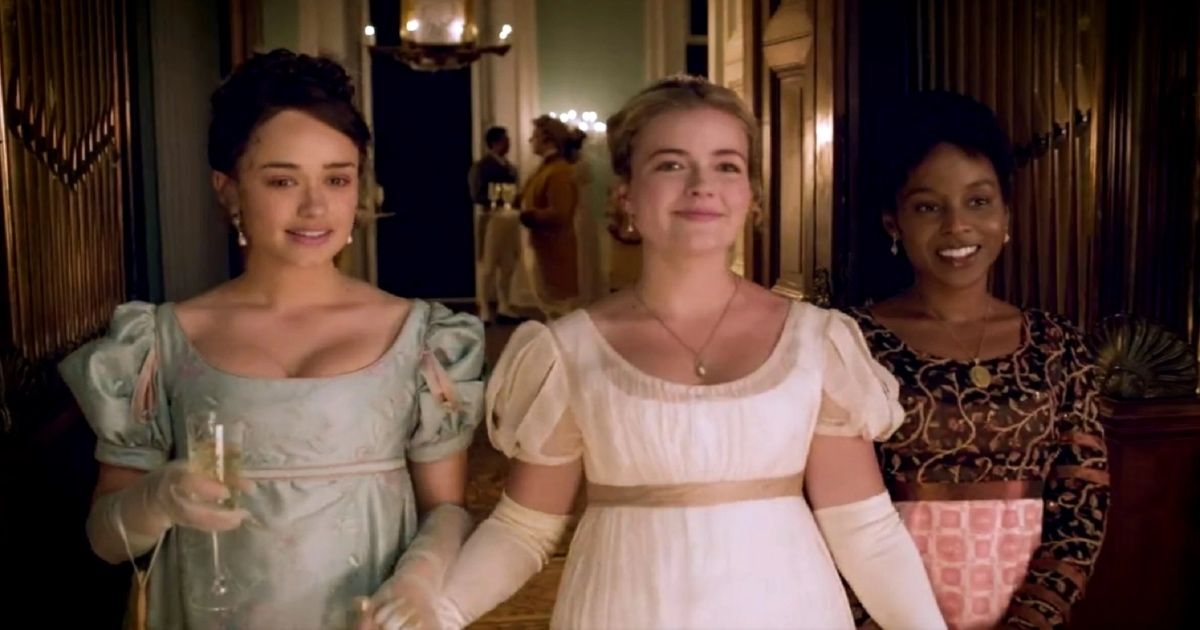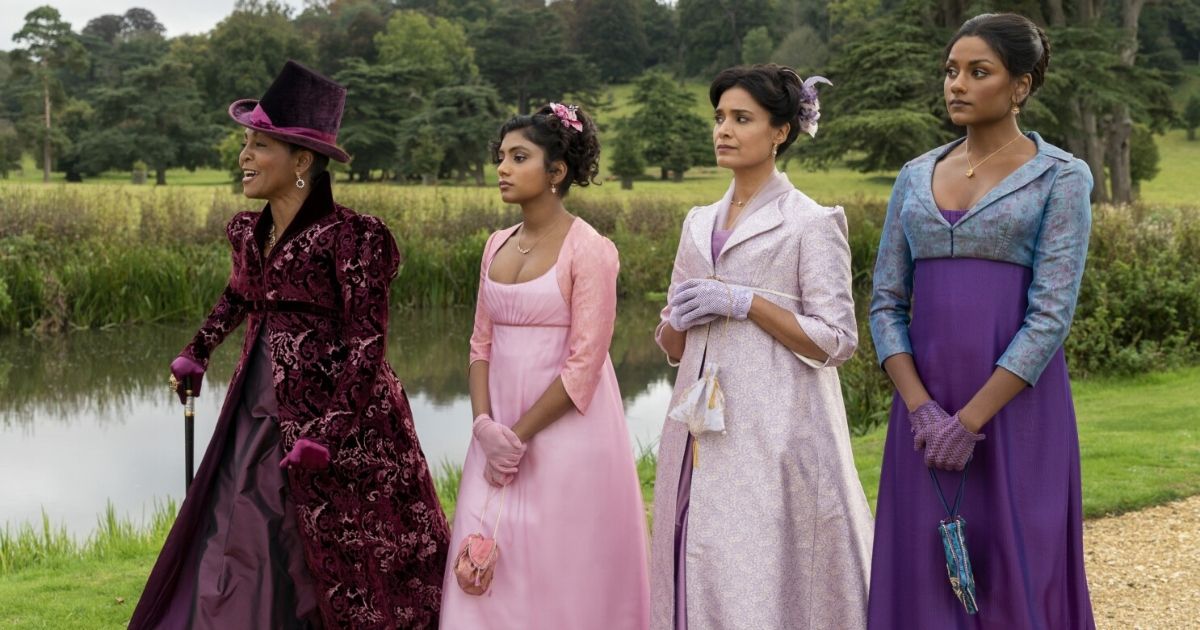Lately, there has been a rising interest in period films and series. There have been many period pieces over the years, but it seems they have, in the last decade, taken center stage across all fields. From streaming services to social media platforms, fans have taken to donning their own corsets and high collars and traveling back in time. But what kicked off this incredibly unexpected reemergence?
In 2020, an incredible historical romance took Netflix by storm. The story of Bridgerton followed a prominent family in Regency-era London and was based on the best-selling novel collection by Julia Quinn. The show had the usual bits when it came to period drama — corsets, passing heated glances, top hats, and more. But the show had one nuanced aspect: its diverse and inclusive cast.
The show threw out the period piece book and cast an array of races for all its prominent roles, leading to many firsts. However, the show’s creator, Chris Van Dusen, claimed that it wasn’t a colorblind cast but that he was inspired by the historical debate over the 1940s African ancestry claims of Queen Charlotte. He wanted “to base the show in an alternate history in which Queen Charlotte’s mixed-race heritage was not only well-established but was transformative for Black people and other people of color in England.”
Bridgerton’s inclusivity sparked praise and debates across the board and made the show one of the most-watched Netflix series in history. Shondaland and Netflix strive to pioneer representation in their on-screen efforts and are committed to expanding diversity. Instantly people were excited by this Shondaland series and wanted more. However, while the Regency drama definitely widened the door to inclusivity in retelling the past, it didn’t open it.
Previous Strides in Inclusiveness
Before Bridgerton even became an idea, other inclusive stories were told on-screen. However, they never reached the level that Bridgerton did until after the show was released. There were films like Amma Asante’s 2013 British drama Belle, which narrated a story inspired by the 1779 painting of Dido Elizabeth Belle beside her cousin Lady Elizabeth Murray at Kenwood House. There were also shows like Sanditon. Andrew Davies adapted the 2019 British historical drama series from an unfinished manuscript by Jane Austen. The show features one of the few characters of color to be found in her writings, a “young West Indian of large fortune.” However, though the show is not as inclusive as the previously mentioned, it does rank.
But on-screen adaptations are not the only ones that have contributed to this idea of what a historical drama could be. A little Broadway musical by the name of Hamilton made major headway for the idea of representation in art in all forms. Creator Lin Manuel Miranda wanted to portray the headline characters with Black, Latino, and Asian actors in order for the “cast [to look] like America looks now.” He told the New York Times that it was a way of “pulling [the audience] into the story and allowing [them] to leave whatever cultural baggage [they had] about the founding fathers at the door.” Making this story of “old, dead white men” accessible to a contemporary audience cracked open the door that shows like Bridgerton kicked down to allow for films like the upcoming Mr. Malcolm’s List and Persuasion to be made.
The Future of Regency-Era Inclusion
Coming to theatres this summer, Mr. Malcolm’s List, a period drama based on the novel written by Suzanne Allain, will continue the new tradition of color-blind casting. The film’s premise depicts a young woman in 19th century England who lends a hand to her scorned friend in hopes of getting revenge on a suitor who rejects anyone who doesn’t meet the requirements he has curated for a wife. The film promises to showcase all the Austen-proof details that fans will want while having an incredibly inclusive cast. The film will be one of the first features to showcase two characters of color in the film’s leading and screen-time dominant romance.
The film will be directed by Emma Holly Jones, making her feature debut with this drama. Jones was actually inspired by Hamilton in her work with this film stating in an interview with The Hollywood Reporter that “it completely challenged [her] preconception of what a period drama could be.” The director worked hard on the film in order to make a movie “specifically for women of color, who have never had their own Kiera Knightley or their own Sense and Sensibility.” In the end, she feels that the film is a great nod to the great period pieces fans grew up with while also marrying them with contemporary rom-coms.
Many directors and creators are taking notes from the blow-up of these inclusive endeavors. It amazes many how these large fan bases, who might have been subjected to prejudice and oppression in these popularized times, have taken to using these films and shows as a “vehicle for their enjoyment and fantasy fulfillment.” The accessibility these projects have begun to provide has shined a light on period pieces for a whole new audience, and let’s just say Jane Austen would be proud.


